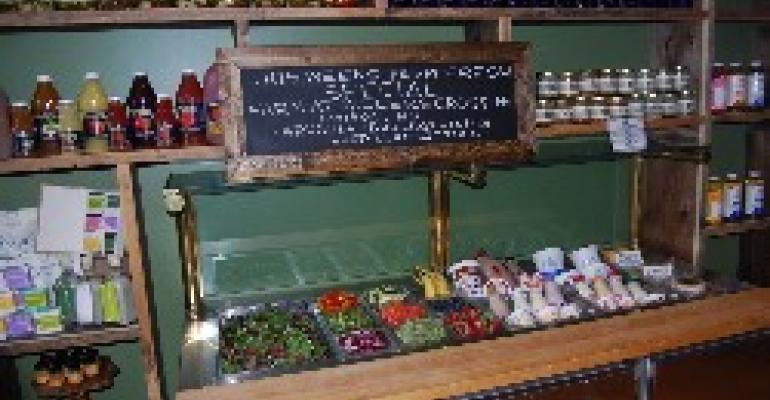It was just last week that we wrote about a store opening in California devoted to anything and everything local. But that one is situated in the bucolic Napa Valley area, while this one is located in the heart of Brooklyn, N.Y.
You gotta problem with that?
Good. Because the new store, Urban Rustic, is actually a full-service grocery store in the trendy Williamsburg section. It features produce, bulk and dry goods and frozen foods, meat, dairy and selected seafood, juice and coffee, cold beverages, health and beauty products, and household goods in 2,600 square feet of floor space. It also has an elevated café area seating 18 people and patio space in back.
Dan Cipriani, co-owner along with Luis Illades and Aaron Woolf, told us the name of the store describes the balance the trio is seeking between connection and community, and authenticity and ethics.
Opening a store in Brooklyn during a cold, snowy week in December has required balance of a different sort, though.
“If we were opening in the summer, it would have been a lot easier because there’s such an abundance of things available,” he said. Nevertheless, demand has created a larger pool of potential vendors to pull from, he added.
“I’ve found a lot more locally than I actually expected for this time of year. It’s been really kind of encouraging that we’ve been able to fill the shelves quite well.”
On the shelves and in the cases are products from the immediate Northeast region: bread from Amy’s in Manhattan; meats from Stone & Thistle Farm in upstate New York; Blue cheese from Berkshire Blue in Massachusetts; and even a number of products from the borough itself, including Six Point beers and ales, Skinnyskinny soaps, McClure’s pickles, M.J.’s herbal salves.
Stores like Urban Rustic and Oxbow Public Market in California might not directly compete with mainstream retailers. But they are still important. Conventional operators should note these concepts provide consumers with a stronger connection to the foods they're purchasing. It’s a demand shoppers will soon be bringing with them into their regular supermarket, if they haven’t already. Are you prepared?

